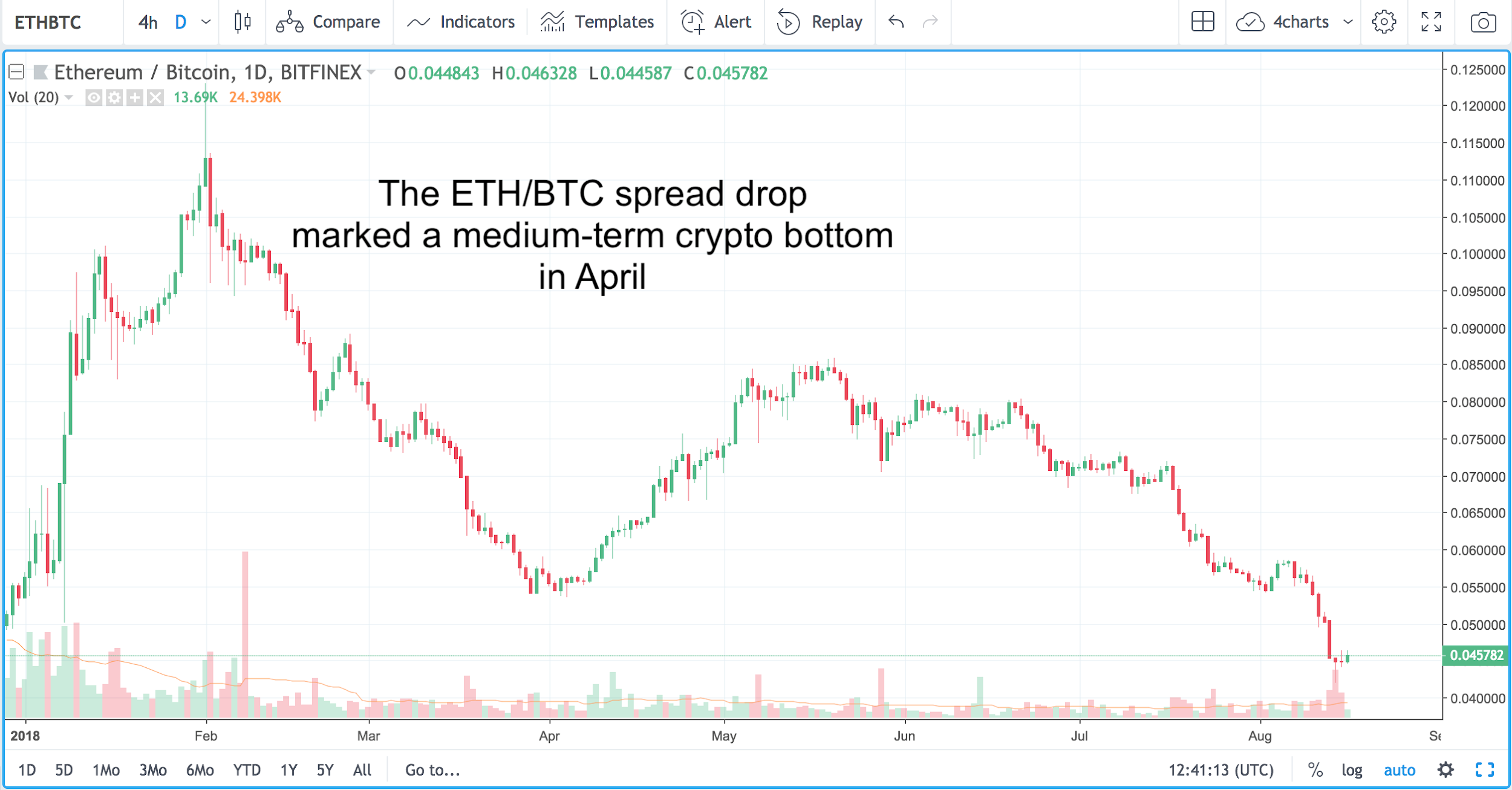After trading through (and surviving) the dot-com bubble, I never thought we’d see another mania in my lifetime. To my surprise, the cryptocurrency craze felt like we had turned back the clock to 1999.
Eight months ago, investors couldn’t get enough of the newfound digital gold rush. It was like the Pokémon Go craze. However, this smartphone-based game had real money at stake.
At its peak, crypto brokerage Coinbase’s free app was the most downloaded app on iTunes. The company was registering 100,000 new accounts a day, allowing it to surpass every single stock-trading platform.
On the way to work, I would catch subway straphangers checking crypto prices, and overhear them talking about the hot new alternative cryptocurrency, or altcoin, everyone was buying.
Speculative altcoins (defined as “anything other than bitcoin”) with kitschy names like Tron, Wanchain and Electroneum dominated watercooler and cocktail conversations. Most people owned things they didn’t understand.
You couldn’t turn on the financial news without catching a segment on bitcoin or noticing the price in their scrolling chyrons.
My physical therapist was day trading altcoins in between patients. His brother had amassed enough crypto gains to buy himself a $400,000 house.
Acquaintances I hadn’t spoken to in years were sending me Facebook messages to ask if now was the time to buy. (I told them to be careful, it’s frothy.)
Instead of taxi drivers telling me their favorite dot-com idea, Uber drivers were pitching me on new crypto tokens they had found on Reddit.
2000 zero zero party over, oops, out of time
So tonight I’m gonna party like it’s 1999
Investment manias are like wild, uninhibited New Year’s Eve bashes followed by a painfully regretful New Year’s Day.
In the past eight months, the crypto party gave way to a brutal bear market, with total market cap dropping from $813 billion to $206 billion for a 75% loss.
But it hasn’t been easy on the bears either.
Bear markets are famously bad both for the bulls and the bears. While a bull market chart might look like a steady escalator on the way up, a typical bear market looks like a bungee jump, characterized by sharp plunges and snapback rallies and then more sharp plunges.
In drinking parlance, this is also known as the “hair of the dog that bit you,” meaning the best cure for what ails you is to have some more of it, like drinking a bloody mary as a short-term hangover remedy.
Since peaking in January, the crypto market has witnessed a handful of false bottoms and relief rallies that ended in soul-crushing sell-offs to remind us that the bear is still alive and well.
However, in the latest sell-off, something different happened that suggests the crypto markets have found a medium-term bottom.
How We Got Here
Before I talk about what’s different in this sell-off, let’s take a look at the underpinnings of the mania to help us figure out if the markets are totally flushed out.
Even though bitcoin dominated the headlines, the veritable ground zero of the crypto craze was Ethereum (ETH).
Launched in 2014, the world’s second-largest cryptocurrency powers a decentralized platform capable of executing programmable “smart” contracts.
Ethereum’s platform allows entrepreneurs to build decentralized applications that can create new decentralized markets for such things as cloud storage and computational power.
In layman’s terms, tokens built on Ethereum let you rent your unused computer power directly to someone else without the need for a middleman.
It’s easier than you might think to launch a new Ethereum-based token, and there are instructional videos on YouTube that suggest it can be accomplished in 15 minutes.
In 2017, entrepreneurs with great (and not-so-great) ideas flocked to Ethereum to build thousands of new crypto tokens. Here was the ground zero of the initial coin offering, or ICO, craze.
It didn’t matter what your token did or what the addressable market size was. We were in a market where everything simply went up.
But you couldn’t participate in this craze without getting your hands on some digital Ethereum.
The Ethereum Frenzy
If you wanted to buy the hot, new crypto token, you first needed to purchase ether. Then you sent ether to the creators of the new project and, in return, they delivered their new crypto token at the ICO price.
When most of these new tokens started trading on exchanges, they could be sold for five to 10 times returns.
Now, when most people hear their friend is making five to 10 times returns in a few weeks essentially by playing a smartphone app, they’re likely to try to get in on the action themselves.
And this is exactly what happened. The frenzy got bigger, and a mania ensued.
The price of Ethereum was trapped in a virtuous cycle, pulling all cryptos into an upward spiral. Rising Ethereum led to more ICOs, which led to higher prices of ETH, which led to even more (terrible) ICOs.
In 2017, ETH rose from $8 to $1,400.
As long as they could sell at higher prices, ICO investors eagerly bought anything offered, which required purchasing even more ETH.
As if on cue, the crypto world produced the Pets.coms and Webvans of the decentralized revolution. There was Dentacoin — bitcoin for teeth; Bananacoin — to fund a banana plantation in Laos; and Jesus Coin — promising to outsource sin forgiveness.
In 2018, investors realized that decentralized salvation was unobtainable. The markets sharply reversed, and Ethereum’s slide dragged crypto markets sharply lower.
While the bitcoin slide dominates the headlines, Ethereum has fared even worse.
At a recent price of $285, Ethereum is now down 5% in the past 52 weeks. That means anyone who bought after mid-August last year is now sitting on losses. In the same period of time, bitcoin is still up 47%.
In the past few weeks, things have taken a turn for the worse. Ethereum has plummeted 40% and dragged crypto markets lower.
What’s Behind the Sell-Off in ETH
Let’s say you had raised $20 million last year for your hot decentralized startup with Ethereum at a price of $500. Remember, all fundraising was done in ether, not dollars.
The capital raised was going to fund the development of your project, allowing you to hire a team of programmers and spend ad dollars to market the idea.
Well, if you didn’t convert your ether back to dollars, your $20 million raised when ETH was $500 is now only worth half of that since the price of ether dropped 50%.
And if you had raised capital when ether was trading at $800, you’re in even worse shape.
Once a virtuous cycle, Ethereum is now a vicious spiral. As the price of ether dropped lower this year, projects that had raised capital at higher prices were forced to sell their ether for dollars.
The downward pressure caused a domino effect as projects that had raised capital at higher ETH prices simultaneously capitulated.
What a Difference a Year Makes
Last summer, the crypto markets were in full mania mode. Prices rose nearly every day, and investors clamored to get in for “fear of missing out” (FOMO).
Crypto bellwether bitcoin posted an earth-shattering 1,318% annual gain in 2017, rising from under $1,000 to over $10,000.
But the market has been stuck in reverse since bitcoin peaked late last year. Bitcoin, at a recent price of $6,100, is down 70%. Investors once suffering from FOMO are now worried about further losses.
Last year’s standouts, the altcoins, have fared even worse. Thriving tokens such as Siacoin, Bancor and Ark have dropped 85% to 90% from their January highs.
This has caused Ethereum to sell off much faster than bitcoin. In the past three months, the ETH/BTC spread fell nearly 50%, dropping from .085 to .045.

Since Ethereum represents thousands of new decentralized projects, the difference between its price and bitcoin can be viewed as a barometer of crypto risk. When investors sell Ethereum, the whole altcoin complex goes down with it, and this brings out more Ethereum sellers.
However, the latest whoosh down might mark a medium-term bottom.
The same spread bottomed out in April and led to a 53% crypto rally.
Remember, bear markets never go down in a straight line … and deep plunges are usually followed by sharp relief rallies.
Regards,

Ian King
Editor, Crypto Profit Trader




